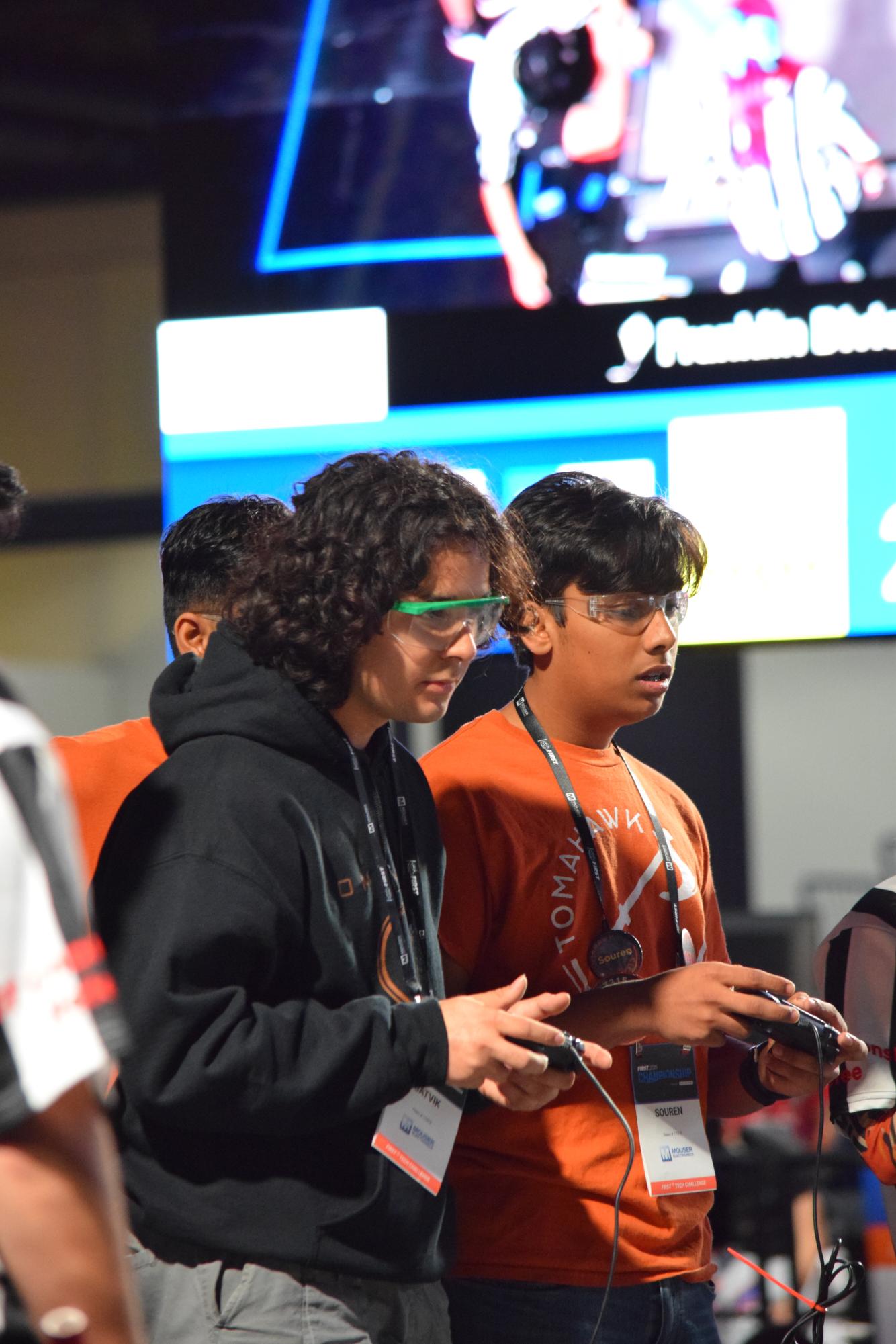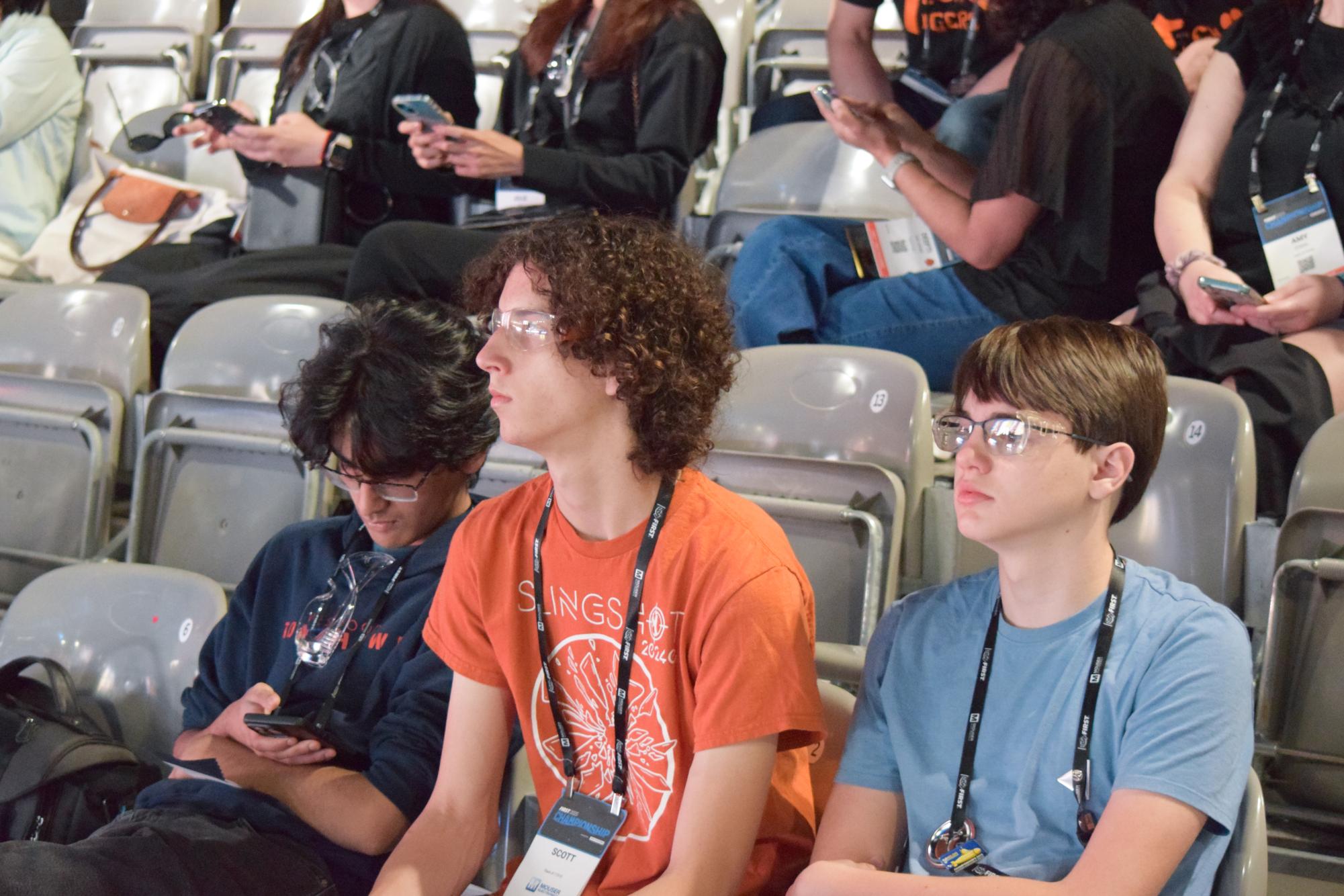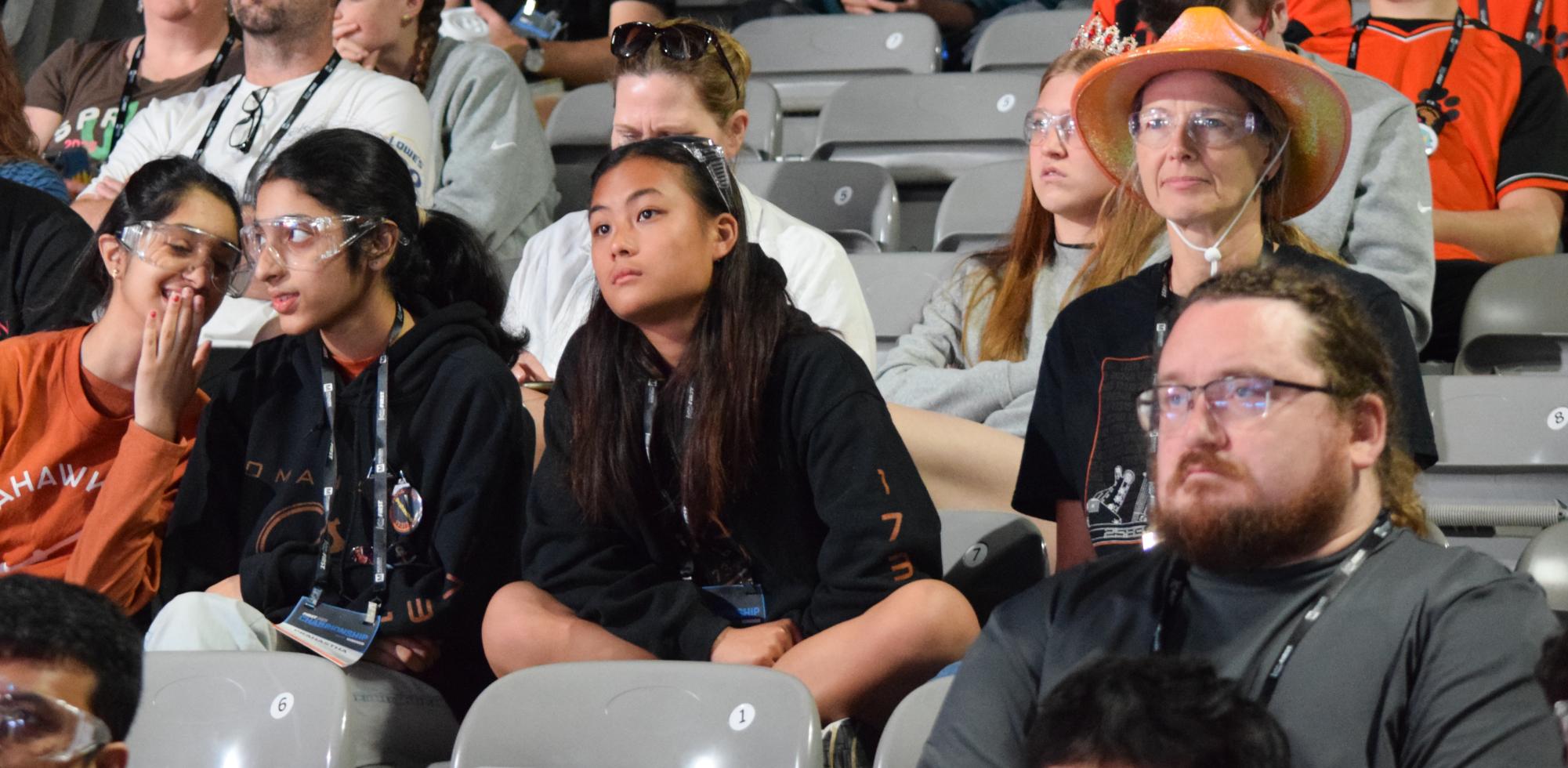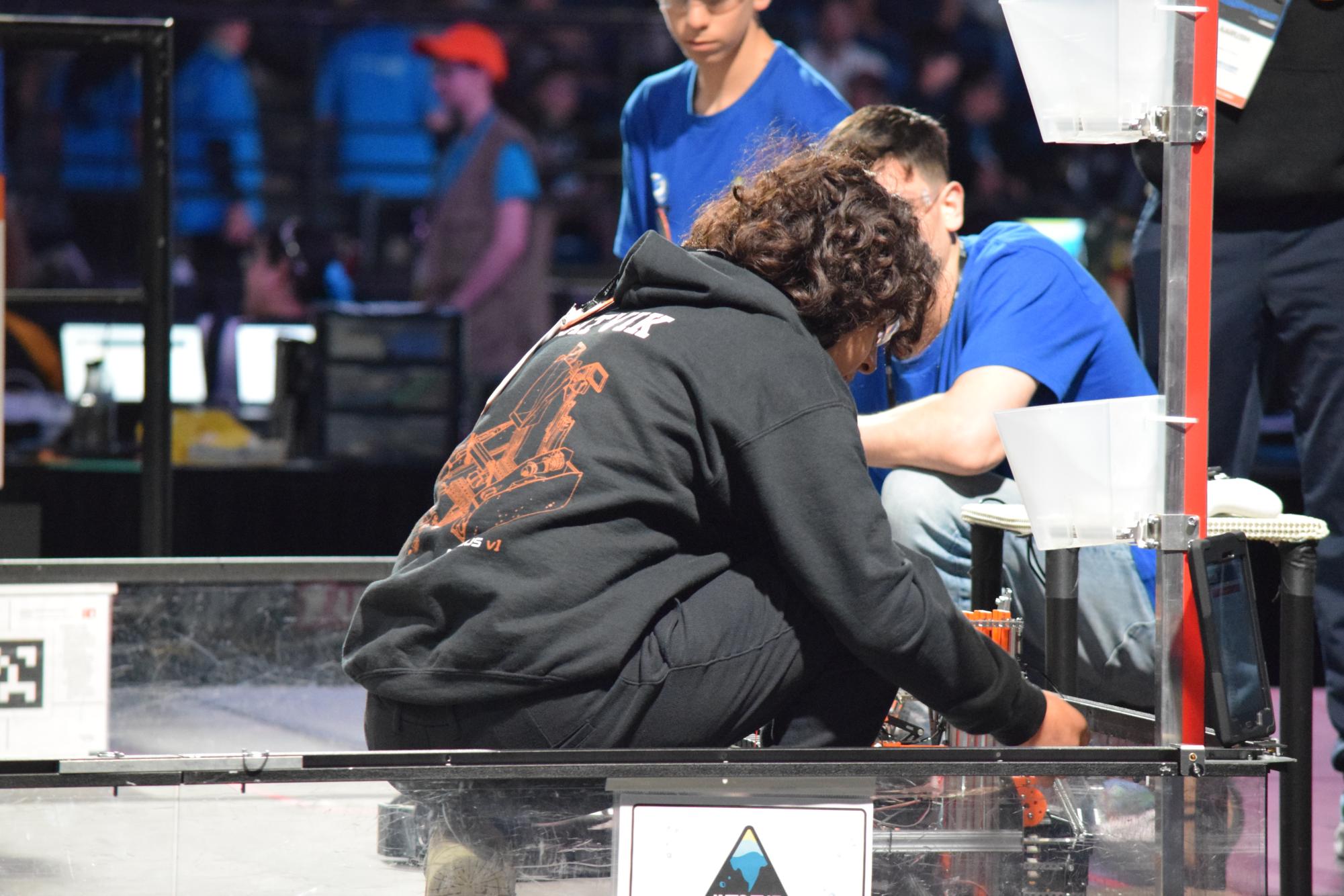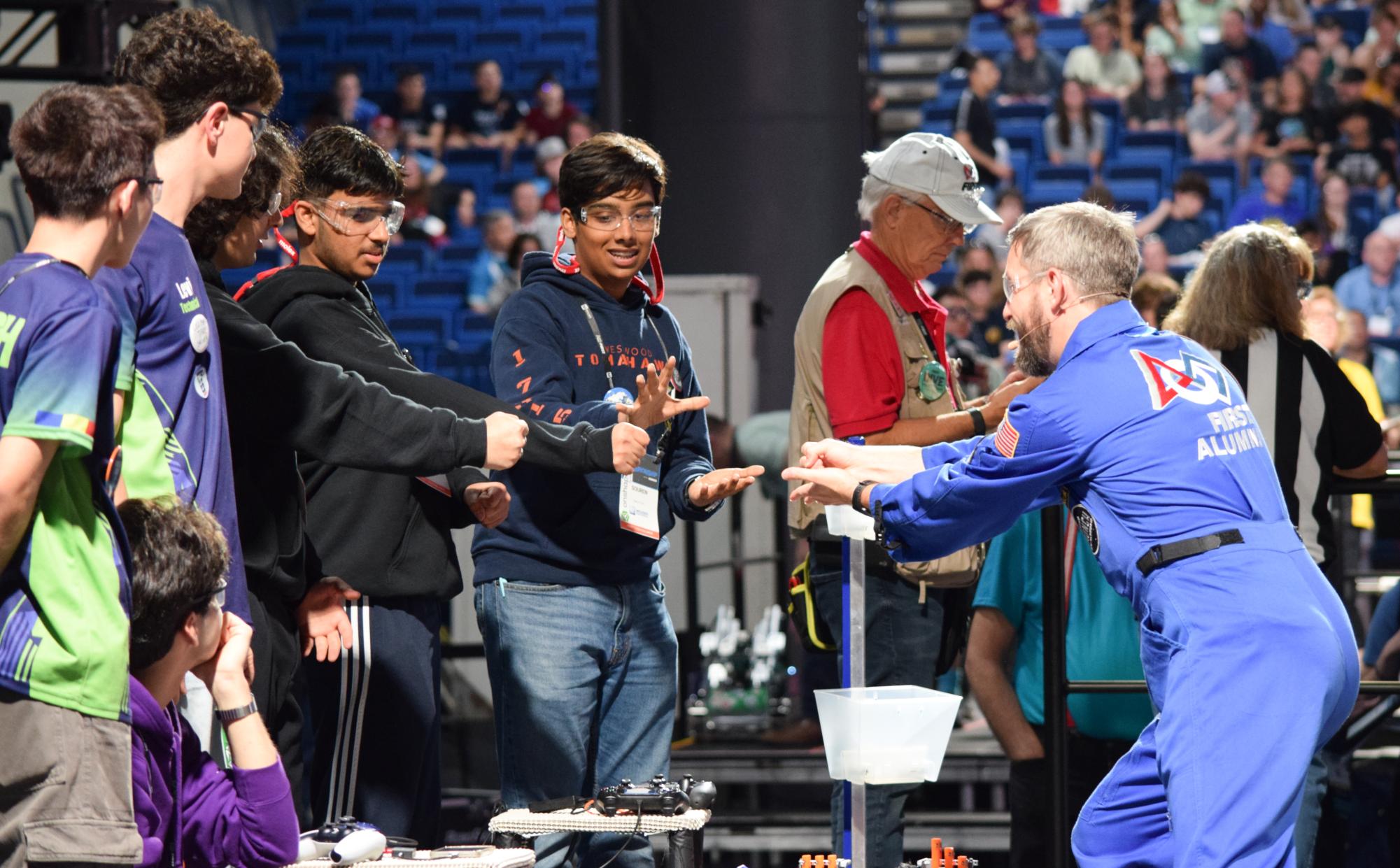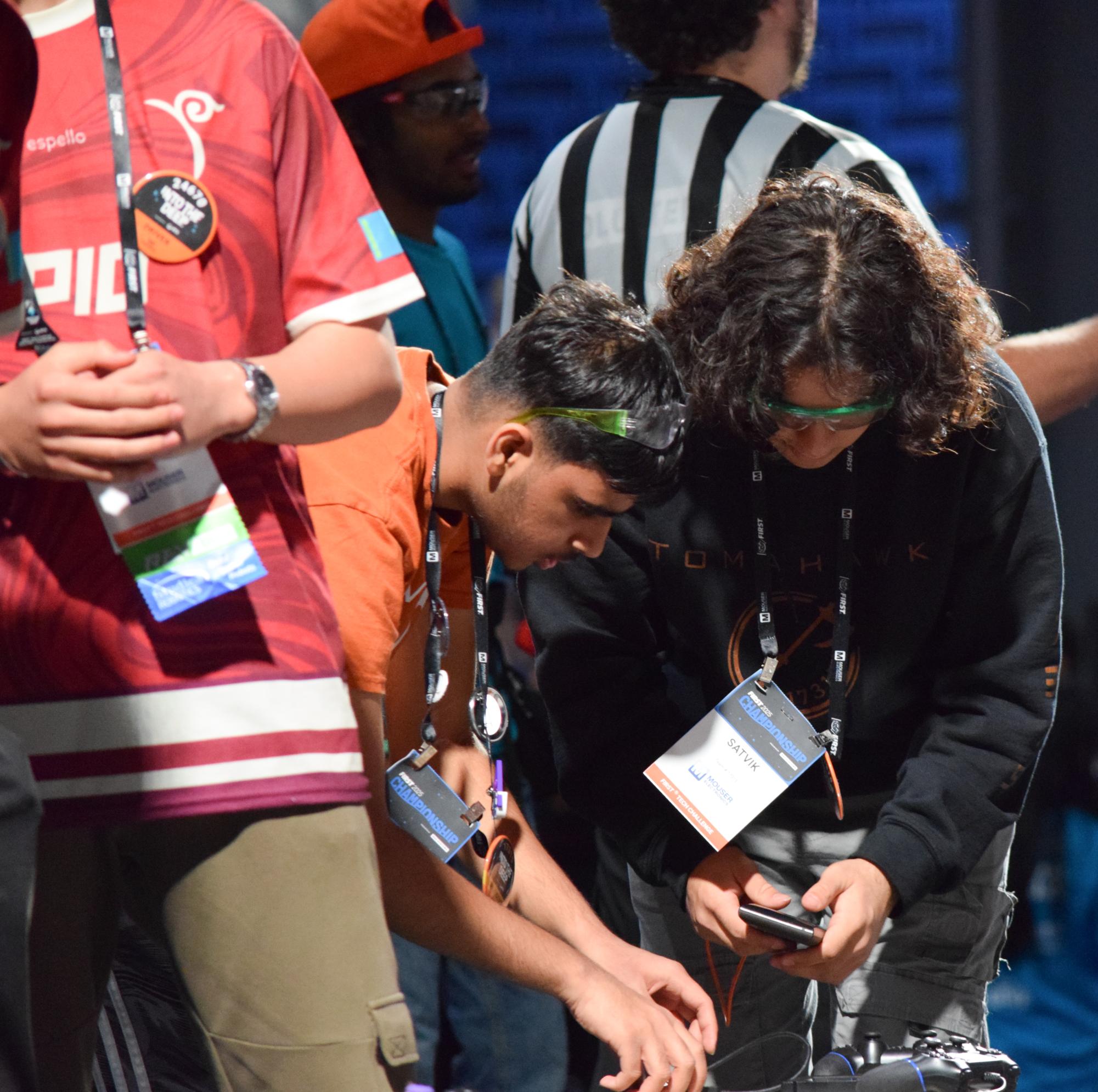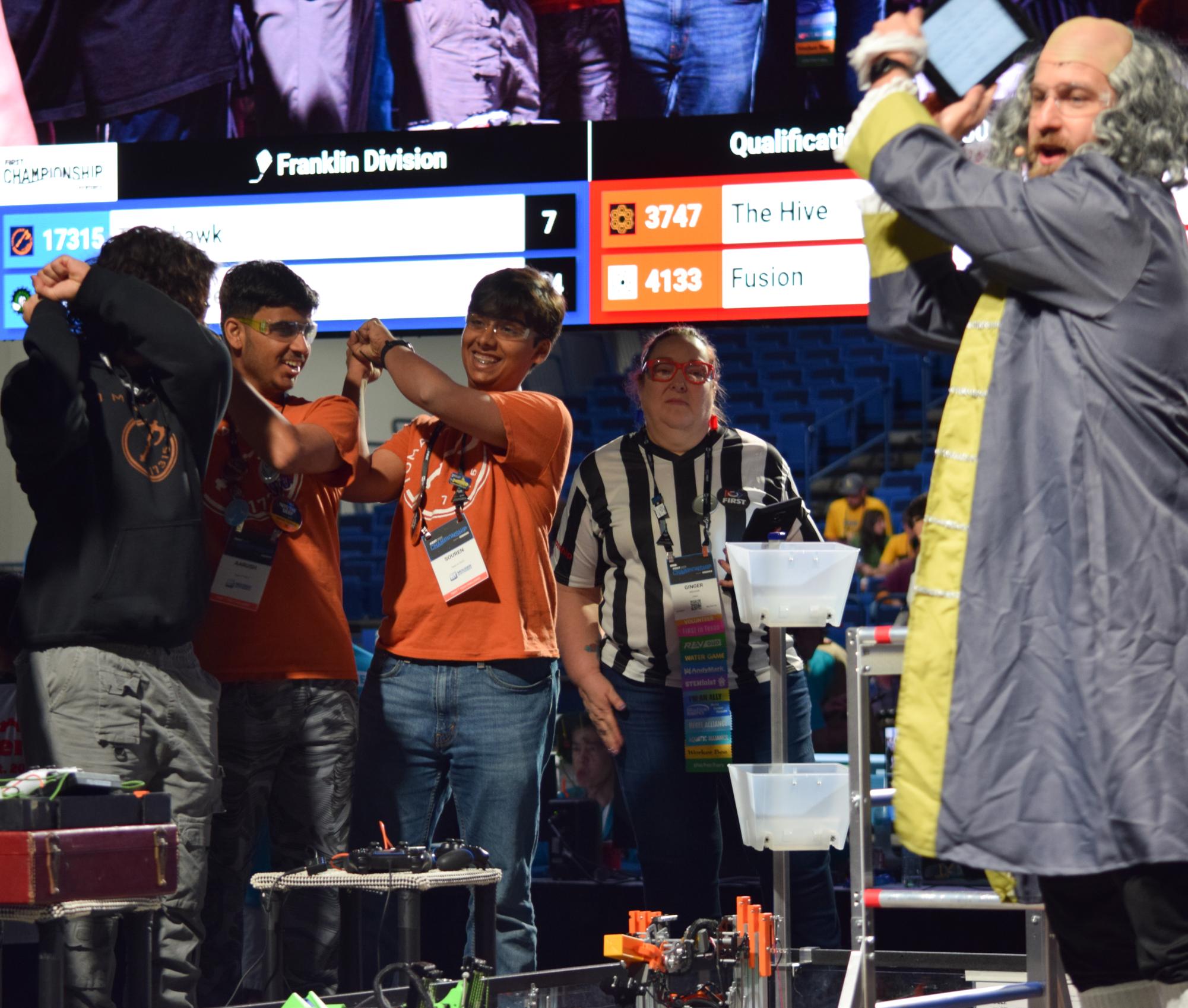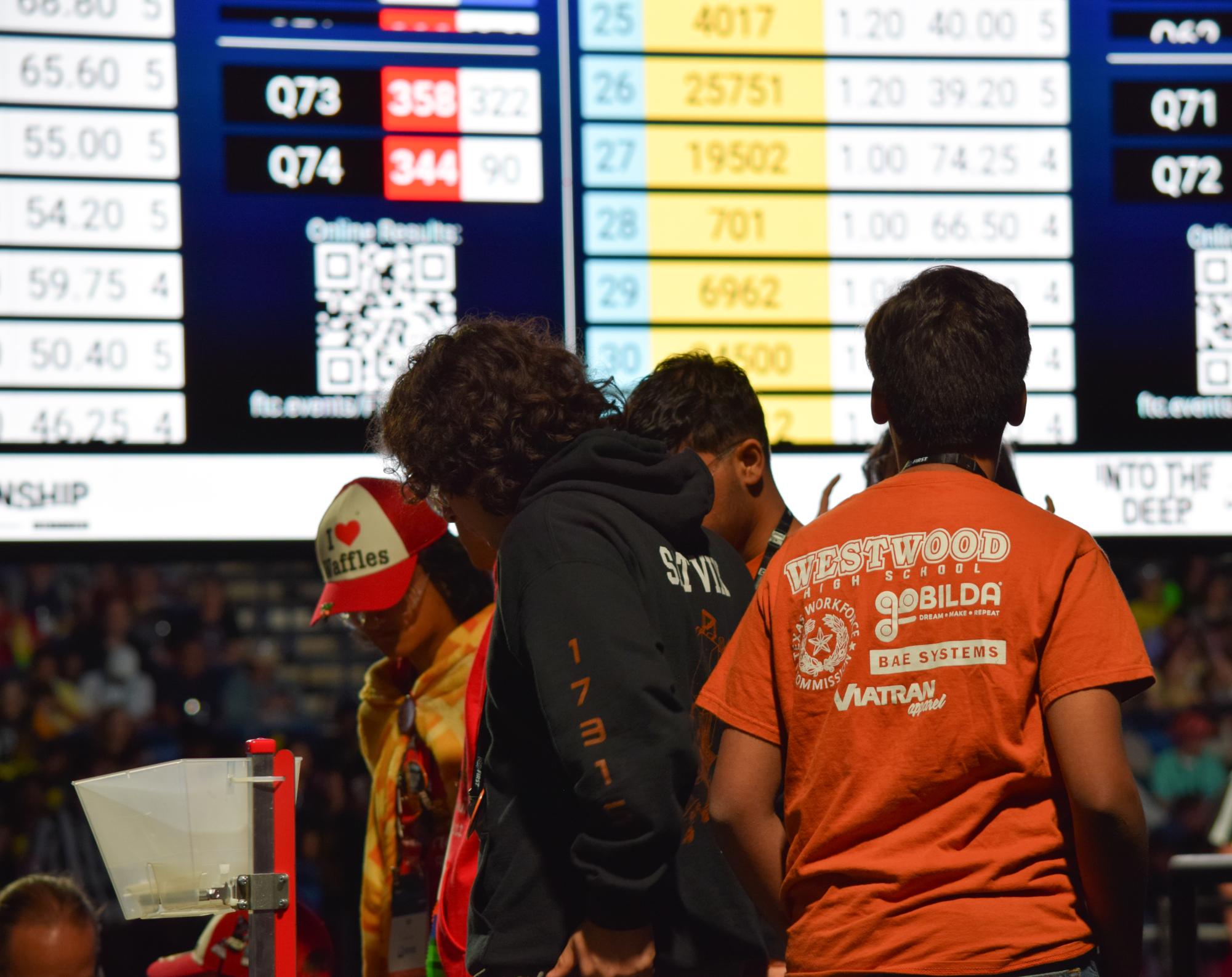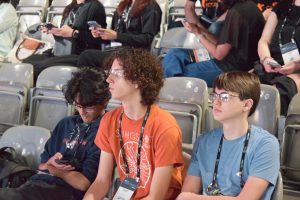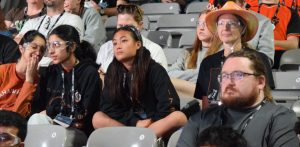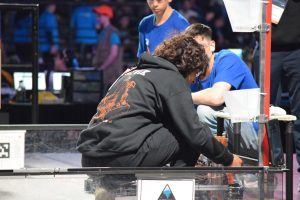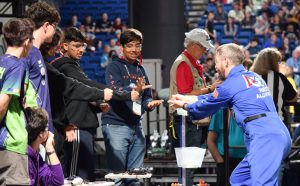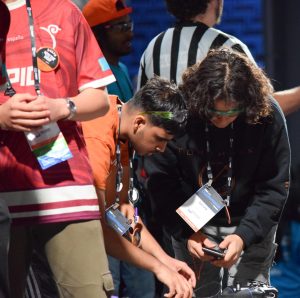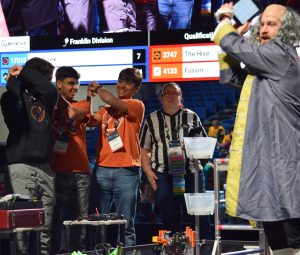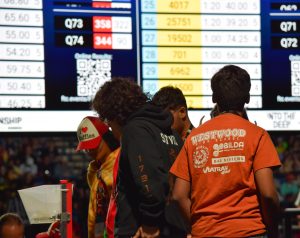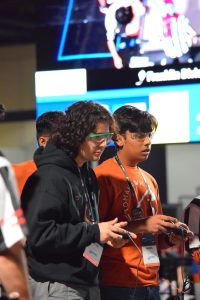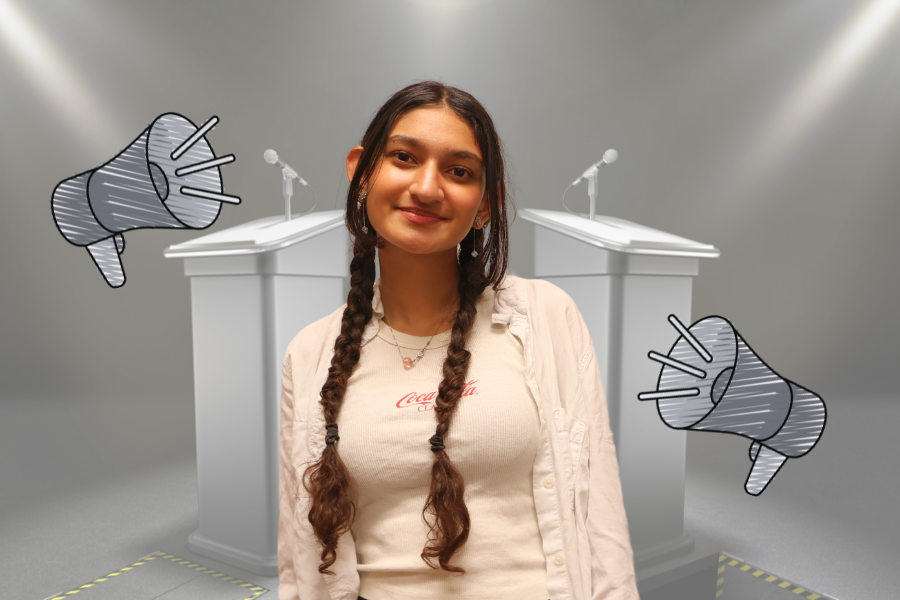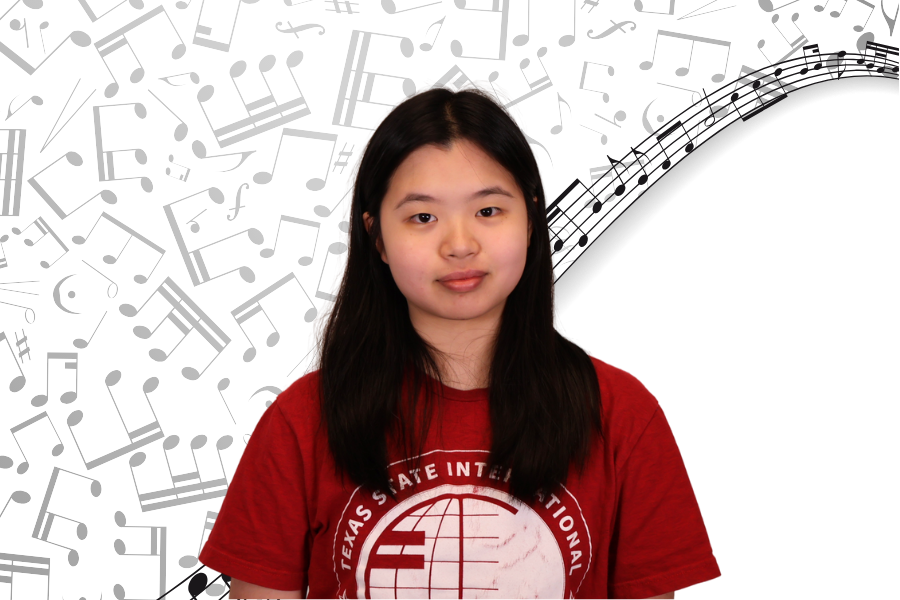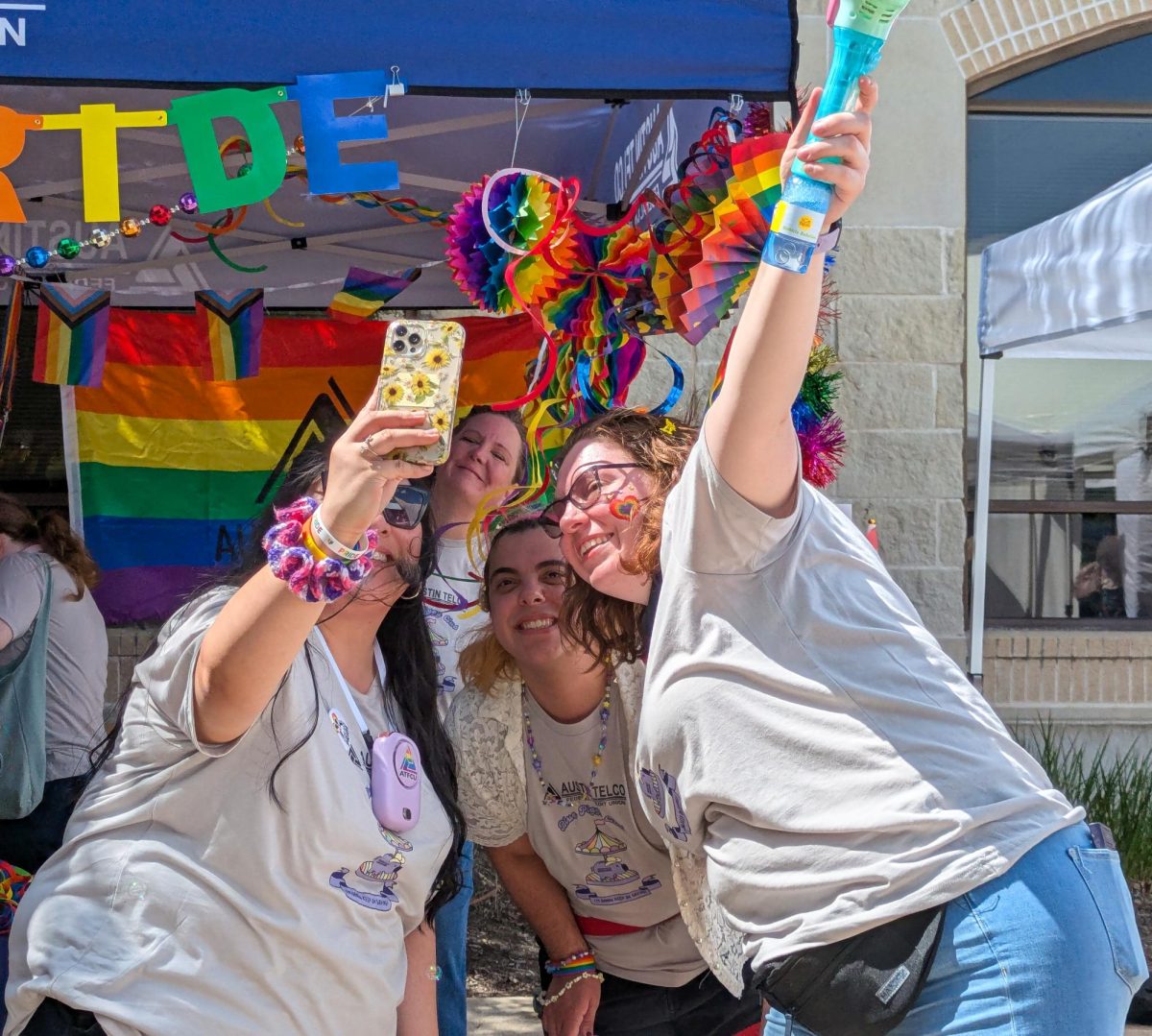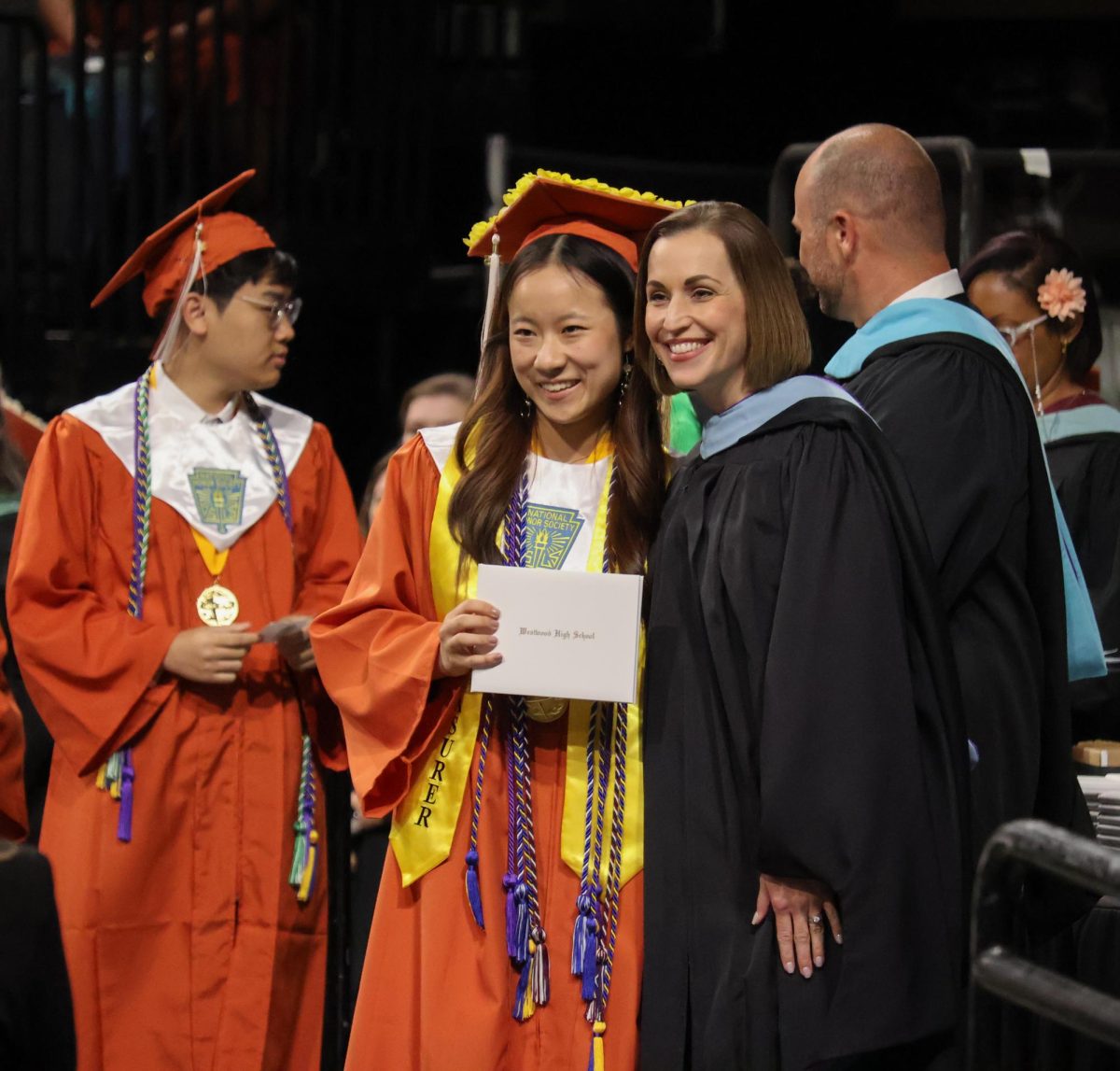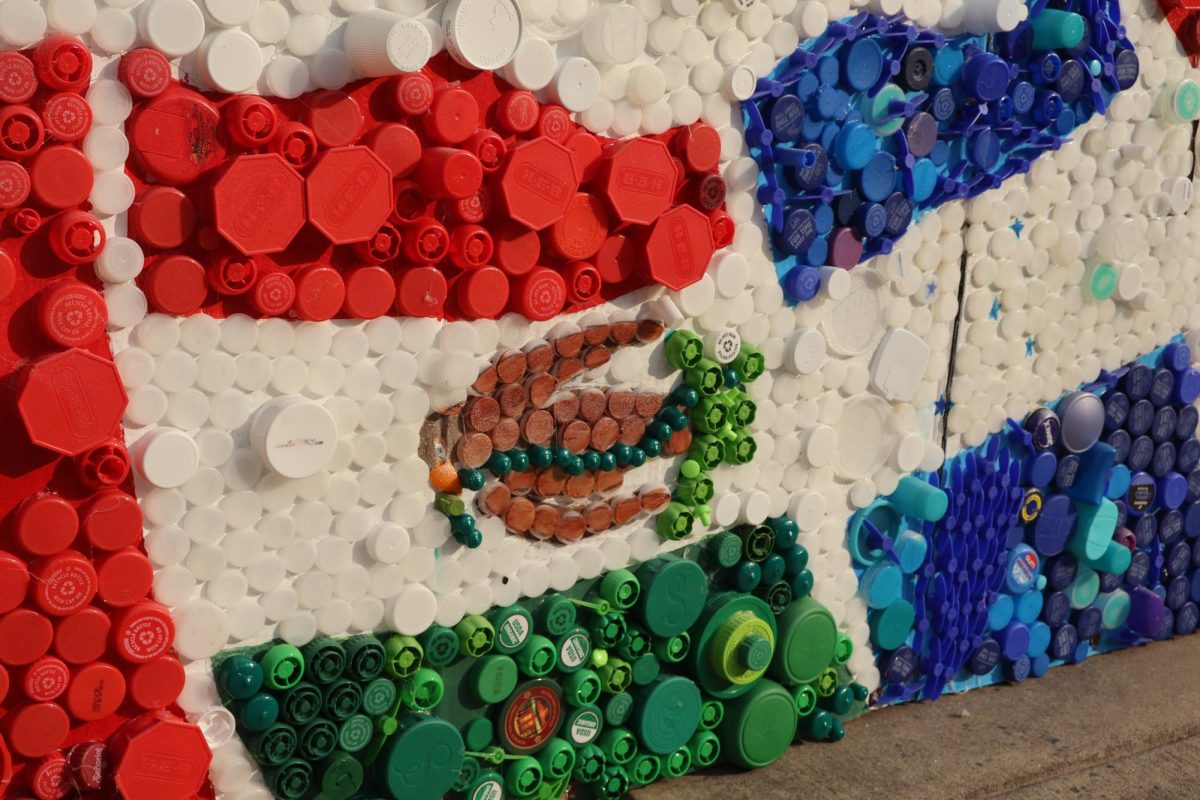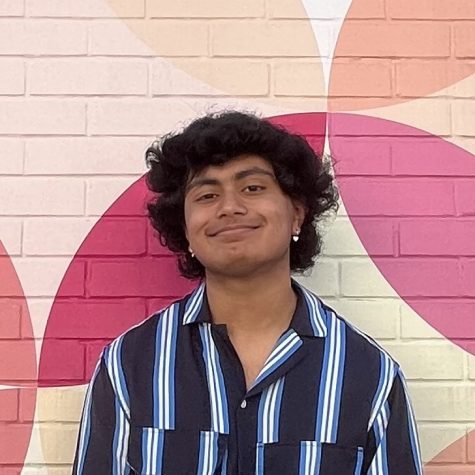Intense chanting, screaming, and clapping filled the stands as over 50,000 students, mentors, and spectators attended the For Inspiration and Recognition of Science and Technology (FIRST) World Championship 2025. Breaking every odd and every expectation, Westwood Robotics Team Tomahawk entered the George R. Brown Convention Center for the second consecutive year, marking their second ever appearance at the World Championship in the team’s history .
Following last year’s debut at the World Championship for Tomahawk, the team entered the 2025 season with only one returning member from the previous roster, meaning few expected the team to make a second appearance. The rest of the original 13 members graduated, left robotics, or joined other teams, leaving Tomahawk Captain Satvik Chawla ’25 with a daunting task. Chawla’s team was composed predominantly of rookies and less experienced members, meaning he had to rely primarily on his four years of FIRST Tech Challenge (FTC) experience to guide his fellow members.
“The main [fear] was that I was not as experienced going into the season,” Chawla said. “That was scary for me because I was thinking, ‘what’s going to happen if I don’t clutch up for my team? I thought that we [wouldn’t] do as good as we actually did because I came into this season not knowing how to do [computer-aided design] (CAD) or program advanced autonomous [sequences], and so I had to rely on my team for a lot of things.”
In order to build a competitive robot while allowing his newer teammates to learn hard skills such as coding and building while also gaining a grasp of game strategy and the inner workings of FTC, Chawla took the lead on more complex tasks and allowed the rookies to do the simpler ones. While this was a daunting task, Chawla balanced the workload by primarily designing the robot, and spent very little time on fabrication, manufacturing, and assembly.
“I basically took [on] the burden of doing the hard CAD stuff, which [was] [designing] mechanisms,” Chawla said. “I let [the other members] help me iterate through [the design] and what to do to make them better. When it came time to actually assemble [the robot], [the rookies] did all the assembling. They knew how it worked and they knew how the robot functioned, and I think that was a good learning aspect for them.”
However, for a team’s robot to triumph, their robot’s hardware is not the only element of success. The software is equally as important since teams that are able to execute more complex tasks, made possible by advanced software, often score comparatively higher and perform much better than teams with lower-quality code. For Tomahawk, Software Lead Aarush Srivastava ’26 led the team’s code efforts, and was the primary driving force behind the robot’s software development.
“I think the biggest factor of [our] success was the amount of time I was able to dedicate to robotics,” Srivastava said. “I feel like dedicating time to the software and the autonomous part of my robot was really helpful in getting us this far to Worlds.”
This season marked Srivastava’s second year in FTC, moving from Team Boomerang last year to Tomahawk this year. Srivastava utilized online resources such as FTC forums and online documentation to advance his knowledge of FTC software; his learning, in conjunction with many hours of fine tuning, allowed his team’s robot to perform at its peak. Chawla and Srivastava worked together to both design and code the robot, creating synergy between the two that allowed their process to be more efficient.
“Over spring break, we just had to grind the software portion at my house,” Srivastava said. “We would [start] at my house early, and leave at around 12 at night. That work we did was really helpful for making the robot work [properly].”
While Srivastava was the primary robot designer, Chawla was still able to teach his teammates hard skills such as software and CAD to sustain the team. Team chemistry is an incredibly important aspect of FTC, as many teams suffer when experienced members graduate without teaching their younger teammates the proper skills. Many FTC teams will only find success a few times when they have a strong enough roster. Teams that focus on sustaining skills and chemistry, however, avoid this problem as they prioritize teaching and recruiting new members so every year they have a strong roster with a wide range of skills. In Chawla’s case, he did this by walking the newer members through what he was doing and ensured that they felt included.
“It was really fun learning how to make a robot and the process that goes into it,” Tomahawk team member Saanvi Bhosekar ’28 said. “While [Satvik] was [designing] or coding, he would explain what he was doing each step of the way, and occasionally tell us to CAD something. We would CAD it, and he would go and edit it and tell us what we missed and what we could do better.”
As a rookie, Bhosekar had a rare introduction to the world of FTC, since qualifying for the World Championship as a newcomer is nearly unheard of. The most shocking aspect for many is the sheer scale of the competition; many less experienced FTC competitors fail to realize how widespread FTC truly is. This exposure for rookie members was made possible only by Chawla’s leadership and the rest of the team’s hard work, which paid off against all odds, allowing members like Bhosekar to experience the wonders of a global robotics competition.
“I didn’t know there were this many teams that came from all over the world just for FTC,” Bhosekar said. “It was like a four- or five-day event, and [the other teams] traveled across the world just because they made it.”
When the moment finally came, and Tomahawk qualified for the World Championship, nearly every member was in shock. Most did not expect them to make it to the summit of FTC. Other members of Westwood Robotics also expected Tomahawk to struggle, as normally teams with a majority rookie roster do not make it far, and almost never qualify for the World Championship. Given Chawla’s position as the only senior, the only returning member, his first year being a captain, and the only member with a full four years of experience in FTC, qualifying for the World Championship felt like a far-fetched dream.
“I was in shock. I was [thinking] ‘there’s no way we made it this far again,’” Chawla said. “I had doubts early on, but I think I have proved myself, and my team has proven themselves too.”
While Chawla was primarily proud of the team’s performance at the FIRST in Texas Central Regional Championship, where the team qualified for the World Championship, other members found that their proudest moment came at the World Championship itself.
“Actually standing on the World stage and the field where we [played] our matches was definitely the highlight of my season this year,” Srivastava said. “We never really expected to make it as far as Worlds. We all thought we were going to max out at [regionals].”
At the World Championship, Tomahawk got the opportunity to meet teams from across the world, with students from 66 countries speaking dozens of languages; however, they shared one common passion: robotics. The transition from playing with local Texas teams to teams from Thailand, Kazakhstan, South Korea, and more was daunting, but Chawla found it to be similar to his previous competitions.
“Honestly, I didn’t find much of a difference,” Chawla said. “They all had a robot and that was universal.”
All in all, Tomahawk has left massive shoes to fill after two consecutive world championship qualifications. The roster for the 2024-2025 season made their mark in a journey against all odds, culminating in one of the biggest achievements in competitive robotics at the largest robotics competition in the world.
“I experienced the whole culture of all the teams across the world competing and playing with them,” Chawla said. “The robot is what unites us.”

